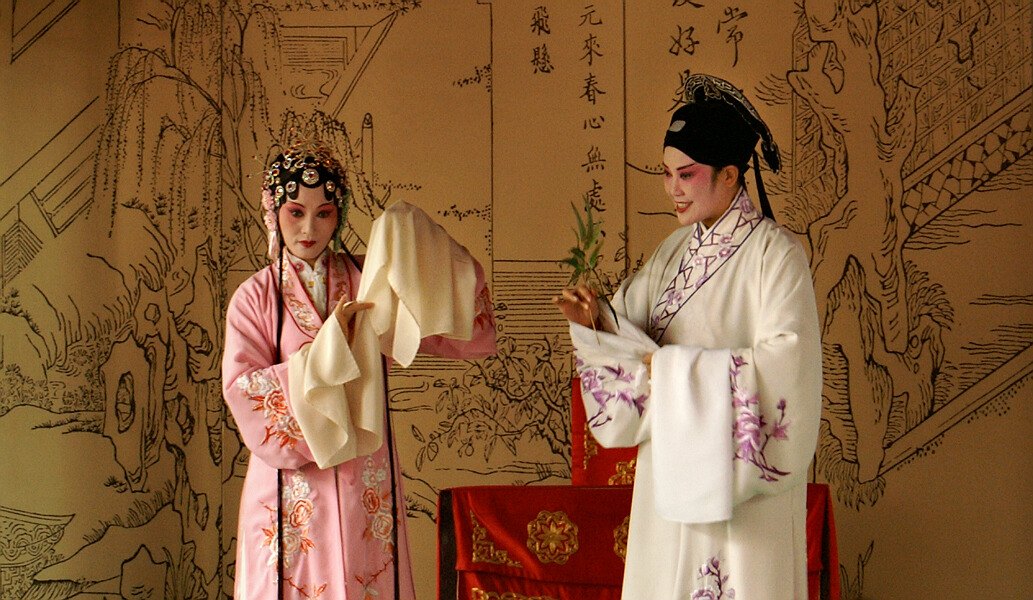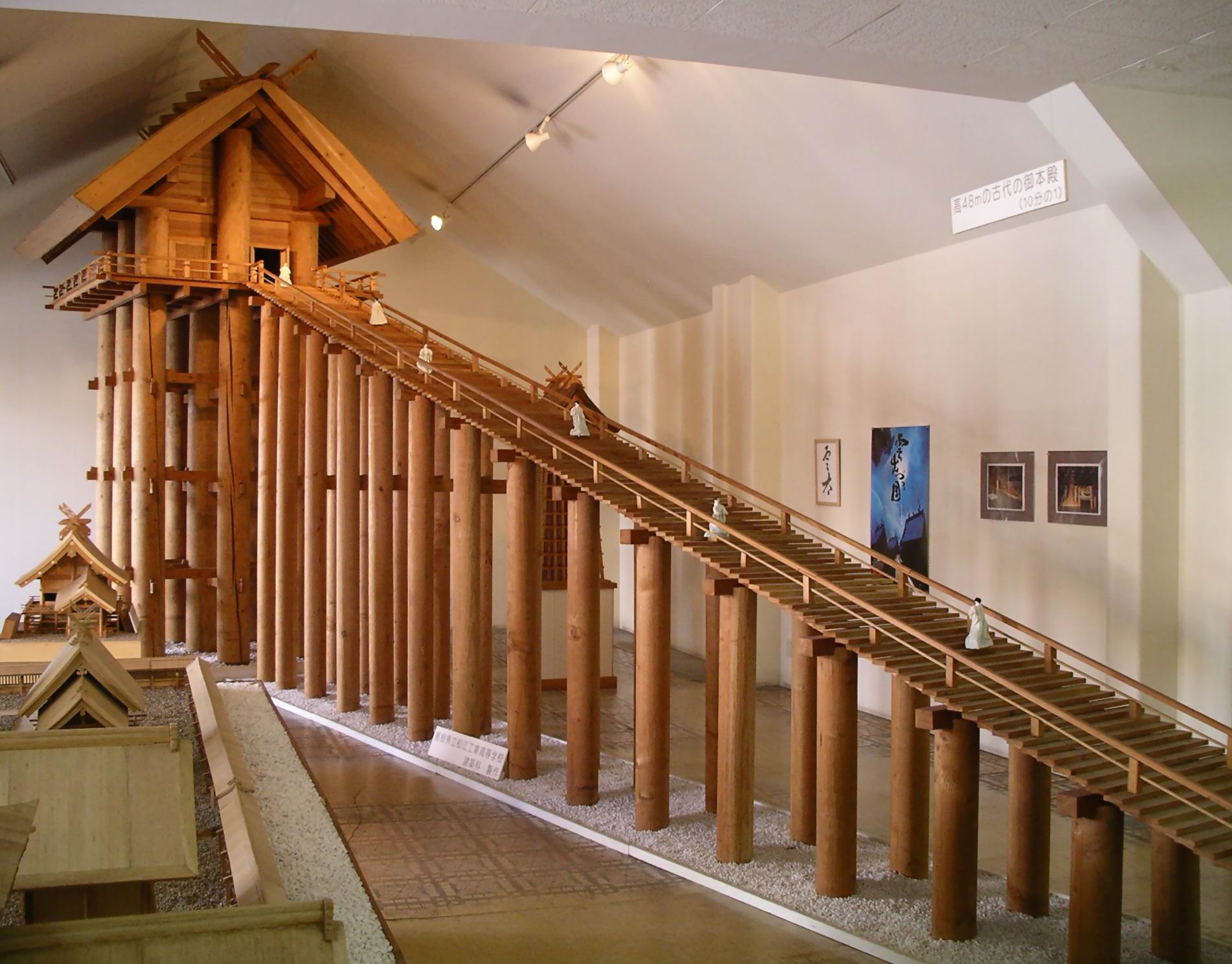|
Sada Shrine
is a Shinto shrine in Matsue, Shimane Prefecture, Japan. The Taisha-zukuri north, central and south halls of 1807 are Important Cultural Properties. Sada Shin Noh, ritual purification dances performed annually on 24 and 25 September, have been designated an Important Intangible Folk Cultural Property. In 2011 Sada Shin Noh was inscribed on the UNESCO Representative List of the Intangible Cultural Heritage of Humanity. See also * List of Important Intangible Folk Cultural Properties * Modern system of ranked Shinto Shrines * Yaegaki Jinja * Kamosu Jinja * Izumo Taisha * Representative List of the Intangible Cultural Heritage of Humanity UNESCO established its Lists of Intangible Cultural Heritage with the aim of ensuring better protection of important intangible cultural heritages worldwide and the awareness of their significance.Compare: This list is published by the Intergover ... References External links *Sada Jinja homepage Shinto shrines in Shimane Prefecture ... [...More Info...] [...Related Items...] OR: [Wikipedia] [Google] [Baidu] |
Shinto
, also called Shintoism, is a religion originating in Japan. Classified as an East Asian religions, East Asian religion by Religious studies, scholars of religion, it is often regarded by its practitioners as Japan's indigenous religion and as a nature religion. Scholars sometimes call its practitioners ''Shintoists'', although adherents rarely use that term themselves. With no central authority in control of Shinto, there is much diversity of belief and practice evident among practitioners. A polytheism, polytheistic and animism, animistic religion, Shinto revolves around supernatural entities called the (神). The are believed to inhabit all things, including forces of nature and prominent landscape locations. The are worshipped at household shrines, family shrines, and Shinto shrine, ''jinja'' public shrines. The latter are staffed by priests, known as , who oversee offerings of food and drink to the specific enshrined at that location. This is done to cultivate harmony ... [...More Info...] [...Related Items...] OR: [Wikipedia] [Google] [Baidu] |
Yaegaki Shrine
, formerly known as , is a Shinto shrine in Matsue, Shimane Prefecture, Japan. History The gods ''Susanoo __FORCETOC__ Susanoo (, ; historical orthography: , ), often referred to by the honorific title Susanoo-no-Mikoto (), is a in Japanese mythology. The younger brother of Amaterasu, goddess of the sun and mythical ancestress of the Japanese im ...'' and princess '' Kushinada-hime'' are enshrined here. This shrine is dedicated to marriage and matchmaking. The people who come to this shrine often pray for a marriage partner, good marital relations, pregnancy and healthy child-bearing. In keeping with this theme, several large wooden phalluses can be found on the shrine's grounds. According to legend, Susanoo came across a couple who had lost seven of their eight daughters to an eight-headed serpent, the Yamata-no-orochi (lit., "Eight-Pronged-Serpent"). The serpent was due to return for the last daughter, Princess Kushinada, when Susanoo arrived. Through his ingenuit ... [...More Info...] [...Related Items...] OR: [Wikipedia] [Google] [Baidu] |
Shikinai Shosha
The is a Japanese book of laws and customs. The major part of the writing was completed in 927.Louis-Frédéric, Nussbaum, Louis-Frédéric. (2005)"''Engi-shiki''"in ''Japan Encyclopedia'', p. 178. History Emperor Daigo ordered the compilation of the ''Engishiki'' in 905. Although previous attempts at codification are known to have taken place, neither the ''Konin'' nor the ''Jogan Gishiki'' survive, making the Engishiki important for early Japanese historical and religious studies. Fujiwara no Tokihira began the task, but work stalled when he died four years later in 909. His brother Fujiwara no Tadahira continued the work in 912 eventually completing it in 927. While the ''Engishiki'' was presented to the throne in 927, it was not used as a basis for enacting policy until 967. Possible reasons for this delay in application include a need for it to be revised, the fact that it was simply a record of already existing systems, and also that some of those systems functioned in ... [...More Info...] [...Related Items...] OR: [Wikipedia] [Google] [Baidu] |
Beppyo Shrines
A ''Beppyō'' shrine () is a category of Shinto shrine, as defined by the Association of Shinto Shrines. They are considered to be remarkable in some way, and thus given a higher status than other shrines. It is considered the successor to the more detailed modern system of ranked Shinto shrines. Overview With the abolition of the state administration of shrines on February 2, 1946, the official system of shrine rankings (modern shrine rankings system) was abolished, and another system was established in 1948 to replace it. After the abolition of the shrine rating system, all shrines were considered to be on an equal footing (except for Ise Shrine). However, since it would be inconvenient to treat the former official national shrines and some of the larger shrines in the same way as ordinary shrines with regard to the advancement and retirement of Shinto priests, the "Regulations Concerning the Advancement and Retirement of Officials and Employees" stipulate that special trea ... [...More Info...] [...Related Items...] OR: [Wikipedia] [Google] [Baidu] |
Masterpieces Of The Oral And Intangible Heritage Of Humanity
The Proclamation of Masterpieces of the Oral and Intangible Heritage of Humanity was made by the Director-General of UNESCO starting in 2001 to raise awareness of intangible cultural heritage—such traditions, rituals, dance, and knowledge—and urge the protection of the communities that create them. Several manifestations of intangible heritage around the world were awarded the status of ''Masterpieces;'' further proclamations occurred biennially. The status exists to recognize the value of non-material culture, as well as to commit states to promote and safeguard the Masterpieces. In 2008, the 90 declared Masterpieces were incorporated into the new Representative List of the Intangible Cultural Heritage of Humanity as its first entries. Background UNESCO defines oral and intangible heritage as "the totality of tradition-based creations of a cultural community expressed by a group or individuals and recognized as reflecting the expectations of a community in so far as they refl ... [...More Info...] [...Related Items...] OR: [Wikipedia] [Google] [Baidu] |
Important Intangible Folk Cultural Properties
A is administered by the Japanese government's Agency for Cultural Affairs (Ministry of Education, Culture, Sports, Science and Technology), and includes tangible properties (structures and works of art or craft); intangible properties (performing arts and craft techniques); folk properties both tangible and intangible; monuments historic, scenic and natural; cultural landscapes; and groups of traditional buildings. Buried properties and conservation techniques are also protected. Together these cultural properties are to be preserved and utilized as the heritage of the Japanese people. Not all Cultural Properties of Japan were created in Japan; some are from China, Korea or other countries. See for example the letter from Duarte de Menezez to Toyotomi Hideyoshi, pictured above, a National Treasure originating in India. In total, some 857 Important Cultural Properties are Chinese in origin, 96 from Korea, 27 from the West, and three from elsewhere. To protect Japan's cultural ... [...More Info...] [...Related Items...] OR: [Wikipedia] [Google] [Baidu] |
Shinto Shrines In Shimane Prefecture
, also called Shintoism, is a religion originating in Japan. Classified as an East Asian religions, East Asian religion by Religious studies, scholars of religion, it is often regarded by its practitioners as Japan's indigenous religion and as a nature religion. Scholars sometimes call its practitioners ''Shintoists'', although adherents rarely use that term themselves. With no central authority in control of Shinto, there is much diversity of belief and practice evident among practitioners. A polytheism, polytheistic and animism, animistic religion, Shinto revolves around supernatural entities called the (神). The are believed to inhabit all things, including forces of nature and prominent landscape locations. The are worshipped at household shrines, family shrines, and Shinto shrine, ''jinja'' public shrines. The latter are staffed by priests, known as , who oversee offerings of food and drink to the specific enshrined at that location. This is done to cultivate harmony ... [...More Info...] [...Related Items...] OR: [Wikipedia] [Google] [Baidu] |
Izumo Taisha
, officially Izumo Ōyashiro, is one of the most ancient and important Shinto shrines in Japan. No record gives the date of establishment. Located in Izumo, Shimane Prefecture, it is home to two major festivals. It is dedicated to the god , famous as the Shinto deity of marriage and to Kotoamatsukami, distinguishing heavenly ''kami''. The shrine is believed by many to be the oldest Shinto shrine in Japan, even predating the Ise Grand Shrine. A style of architecture, ''taisha-zukuri'', takes its name from the main hall of Izumo-taisha. That hall, and the attached buildings, were designated National Treasures of Japan in 1952. According to tradition, the hall was previously much taller than at present. The discovery in the year 2000 of the remains of enormous pillars has lent credence to this. The shrine has been rebuilt every 60 to 70 years to maintain the power of the ''kami'' and maintain architectural techniques. This regular rebuilding process is called " Sengū" (遷宮) a ... [...More Info...] [...Related Items...] OR: [Wikipedia] [Google] [Baidu] |
Modern System Of Ranked Shinto Shrines
Modern may refer to: History *Modern history ** Early Modern period ** Late Modern period *** 18th century *** 19th century *** 20th century ** Contemporary history * Moderns, a faction of Freemasonry that existed in the 18th century Philosophy and sociology * Modernity, a loosely defined concept delineating a number of societal, economic and ideological features that contrast with "pre-modern" times or societies ** Late modernity Art * Modernism ** Modernist poetry * Modern art, a form of art * Modern dance, a dance form developed in the early 20th century * Modern architecture, a broad movement and period in architectural history ** Moderne, multiple architectural styles ** Modernisme a.k.a. Catalan Modernism * Modern music (other) Geography * Modra, a Slovak city, referred to in the German language as "Modern" Typography * Modern (typeface), a raster font packaged with Windows XP * Another name for the typeface classification known as Didone (typography) ... [...More Info...] [...Related Items...] OR: [Wikipedia] [Google] [Baidu] |
Shinto Shrine
A Stuart D. B. Picken, 1994. p. xxiii is a structure whose main purpose is to house ("enshrine") one or more kami, , the deities of the Shinto religion. The Also called the . is where a shrine's patron is or are enshrined.Iwanami Japanese dictionary The may be absent in cases where a shrine stands on or near a sacred mountain, tree, or other object which can be worshipped directly or in cases where a shrine possesses either an altar-like structure, called a himorogi, , or an object believed to be capable of attracting spirits, called a yorishiro, , which can also serve as direct bonds to a . There may be a and other structures as well. Although only one word ("shrine") is used in English, in Japanese, Shinto shrines may carry any one of many different, non-equivalent names like , , , , , , , , , or . Miniature shrines (hokora, ) can occasionally be found on roadsides. Large shrines sometimes have on their precincts miniature shrines, or . Because the and once had differe ... [...More Info...] [...Related Items...] OR: [Wikipedia] [Google] [Baidu] |





